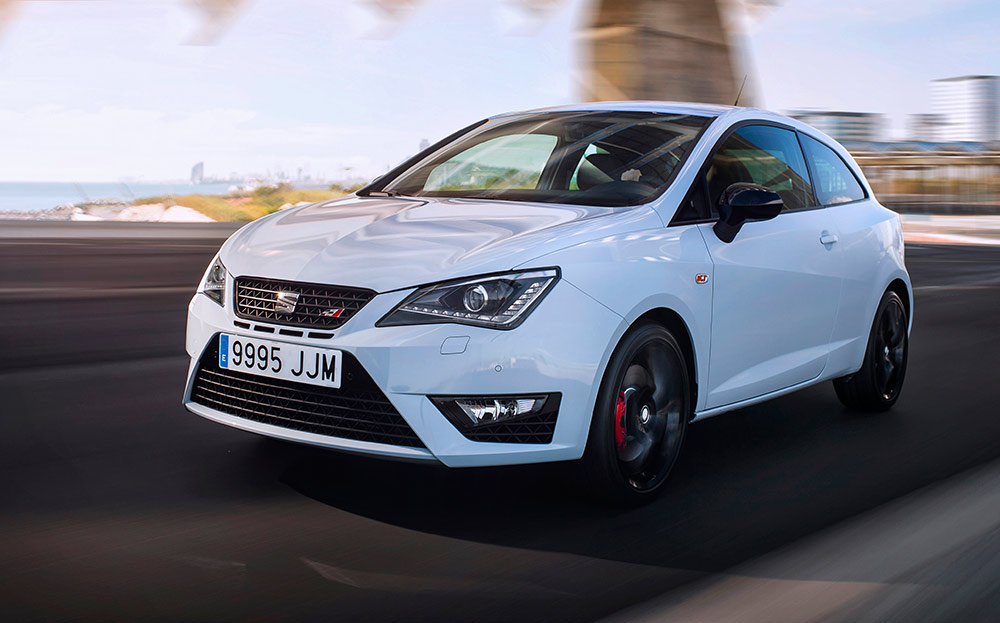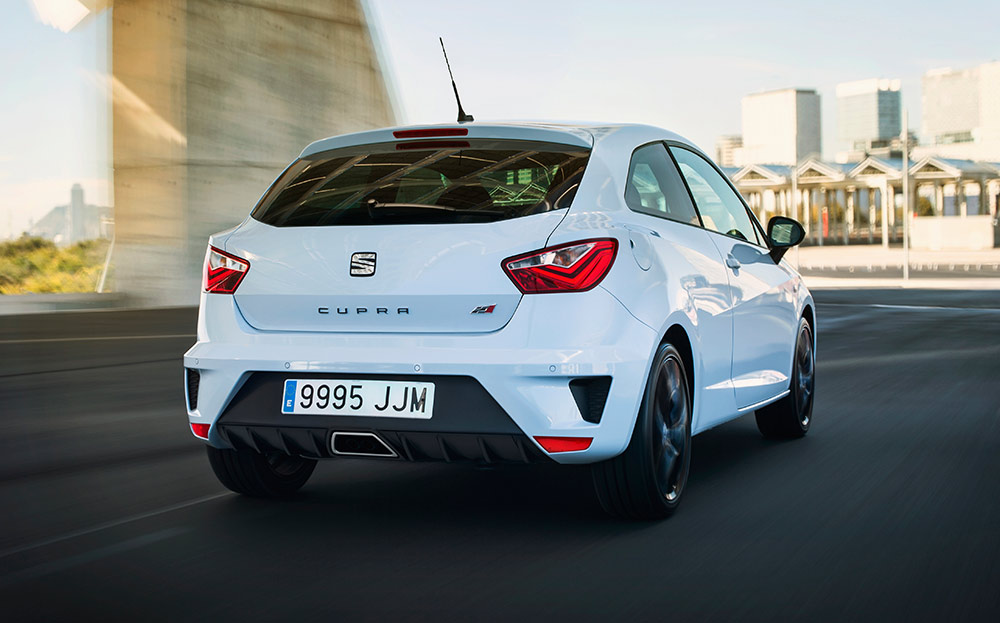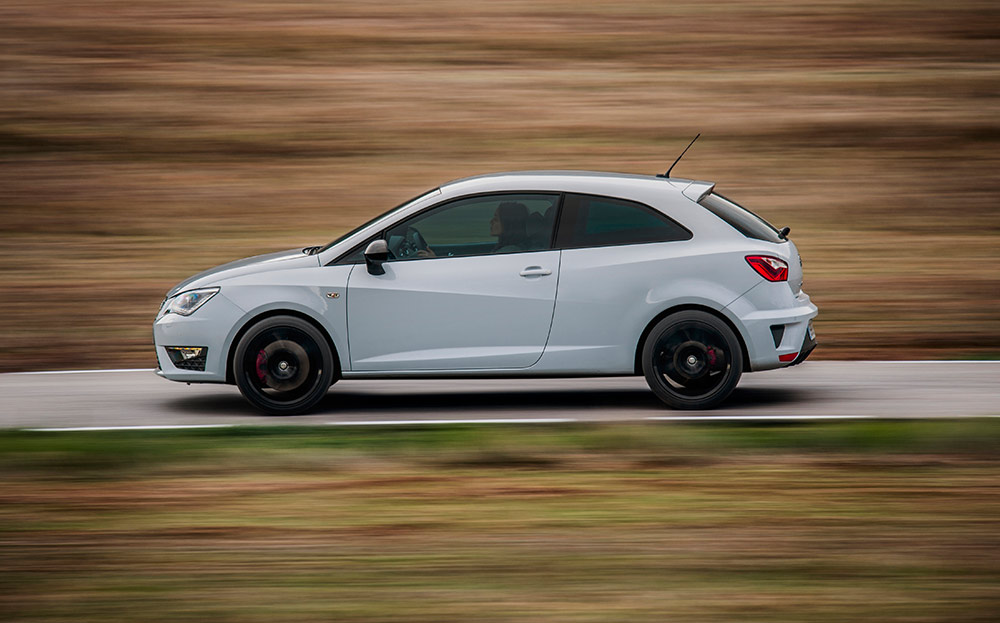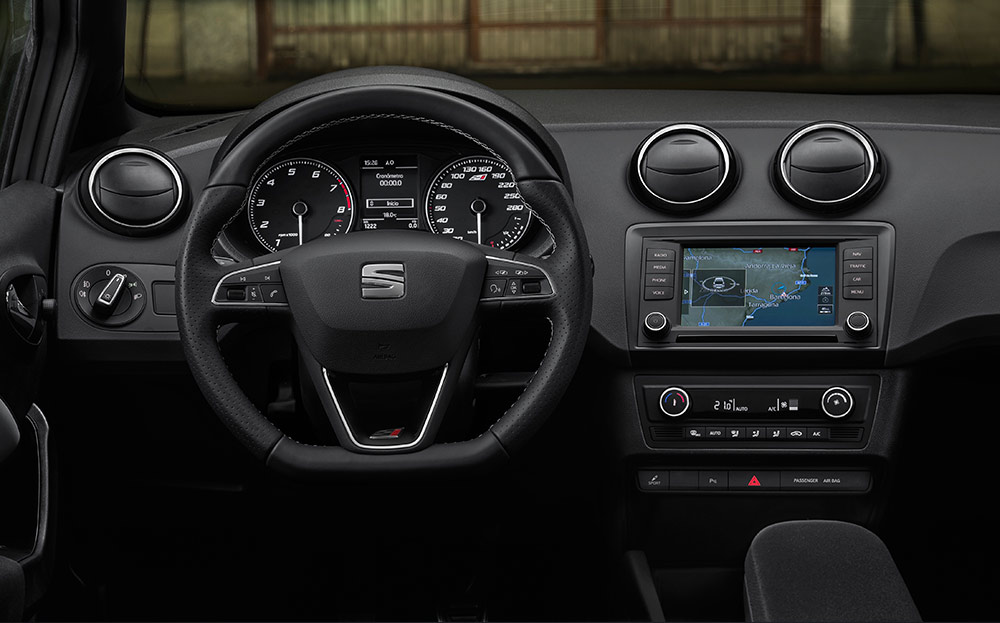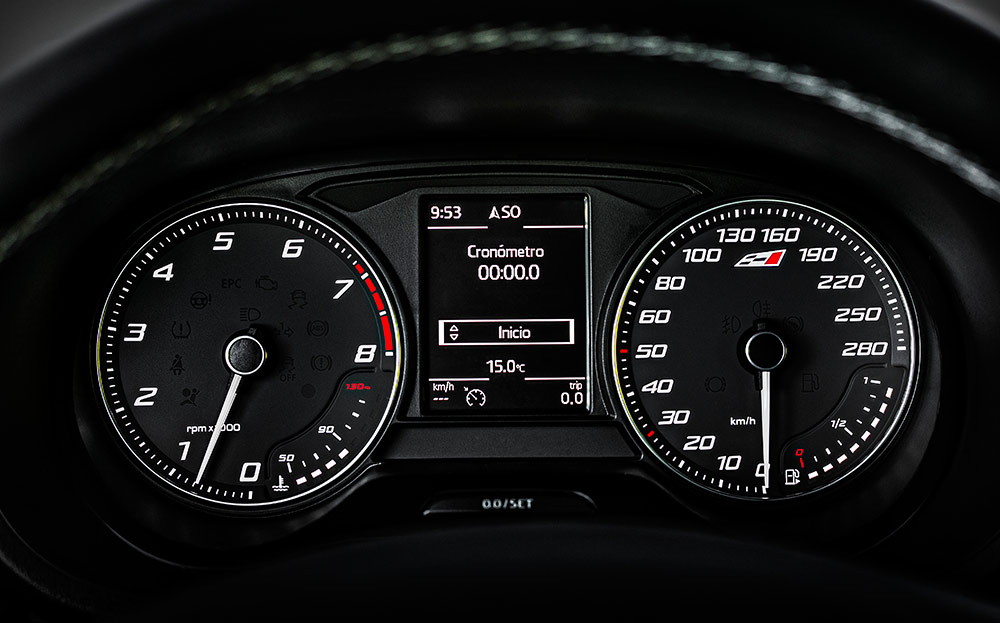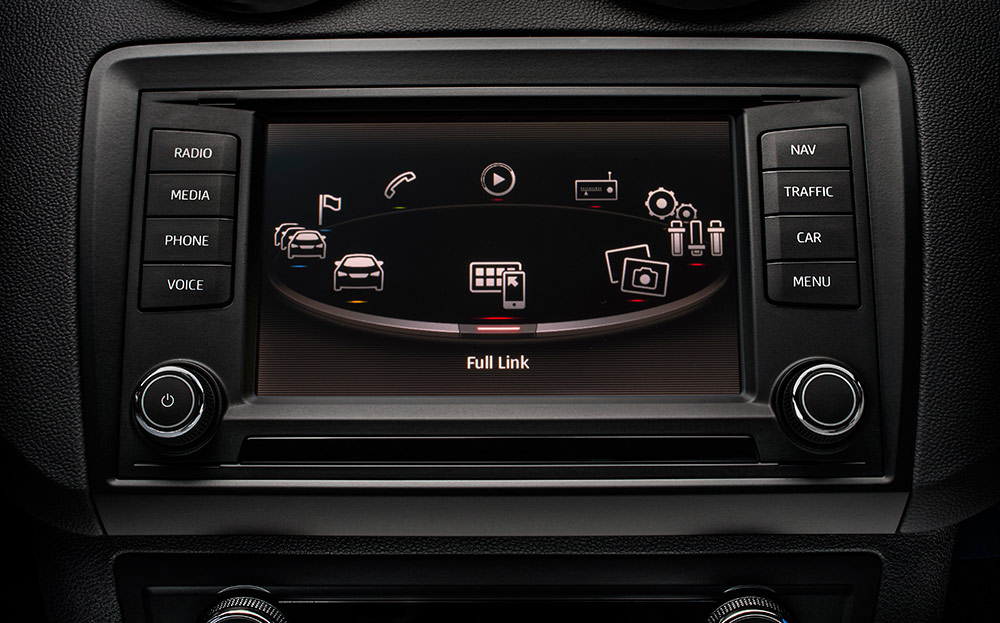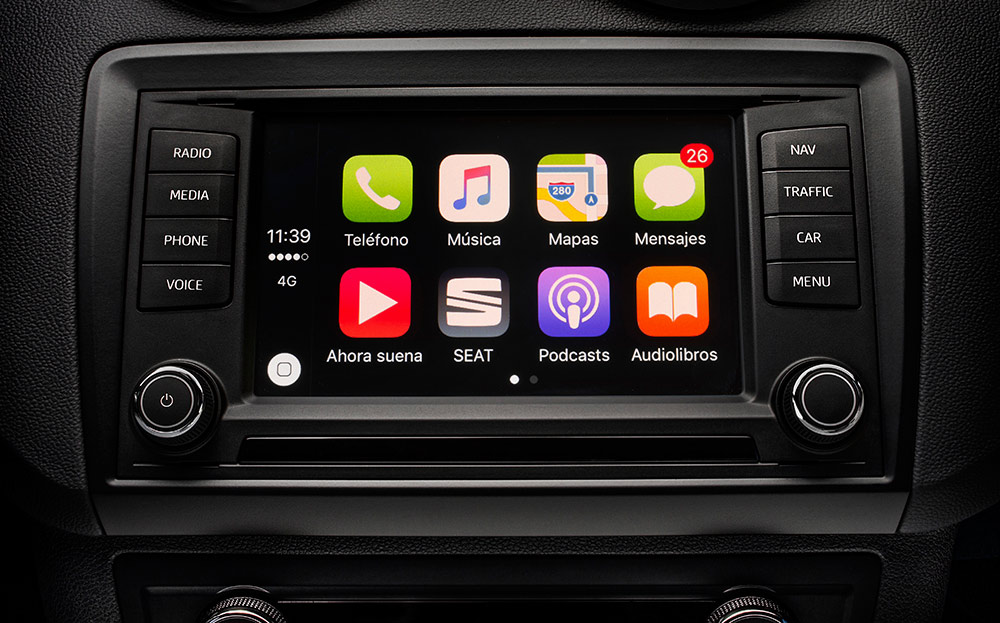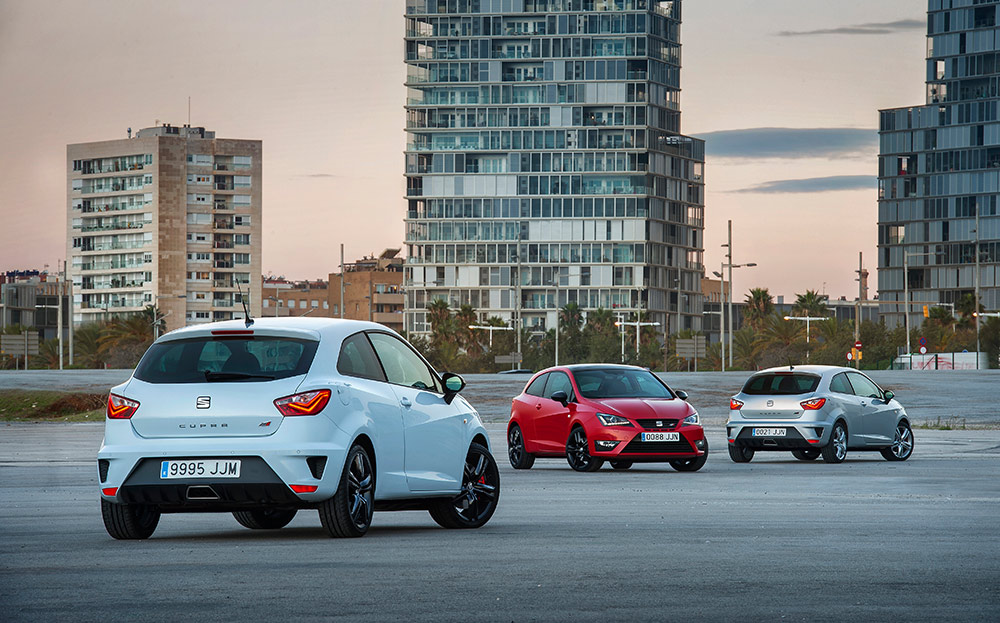The Clarkson Review: 2016 Seat Ibiza Cupra
Raving in slippers with General Franco
MOST OF the world’s car companies were started by someone who had a vision. Sir Henry Royce, Sir William Lyons, Louis Chevrolet, Nicola Romeo, Soichiro Honda, Enzo Ferrari, Brian Hyundai. I may have made that last one up.
All these men saw what everyone else was doing and decided they could do something different, something better. They had a dream and they decided to live it. Seat, however, is different.
Shortly after the Spanish Civil War had reduced Spain to a smouldering ruin, a committee of serious-faced bankers and industrialists was formed, and after a couple of meetings these men decided that if their country was to be hauled out of the mire, the population would need cars. And to stop people spending what little money they had on imports, they reckoned the country should make its own. Siat was born.
View the Seat Ibizas for sale on driving.co.uk
At the time, the Spanish were extremely good at shooting one another and throwing donkeys off tower blocks but extremely not good at making anything as complicated as a car. They would therefore need a foreign partner, and they set off into Europe to find one.
Sadly it was 1942, and the rest of Europe was a bit too busy with other things to worry about how the Spanish might make a small and inexpensive family saloon. So they had to wait until 1948, when Fiat came along, explaining that no one in the world was quite so good at making sub-12bhp cars for the downtrodden masses. The Italian company was given the gig and just five years later produced a Barcelona-made family saloon that was very luxurious and expensive. It flopped.
What’s more, General Franco had decided that the “i” in the company name, which stood for Iberica, should really be an “e”, for Española. Which meant the firm wasn’t thinking about exporting to any English-speaking country. Because who in their right mind would buy a car called a Seat?
Actually, strike that. In Britain we had the Humber, which was named after a sludgy brown river of turd and effluent. And in America they had the Oldsmobile. And in Russia they had the Pantry. So, in the grand scheme of things, driving around in a chair wouldn’t have been the end of the world.
The new Spanish operation had bigger problems anyway. Many years of strikes, floods and industrial shenanigans followed, during which no cars of any note were made. Seriously, can you picture a Seat from the 1970s? Nope. Me neither.
“I reckoned there’d be a pulsating beat and a Eurotrash DJ endlessly inviting the party people to spray one another with foam. But no. It was more chillout than house”
At the beginning of the 1980s, though, there was a disaster. Fiat pulled out. Seat was thus forced to go it alone, and in 1982 there was a great deal of trumpetry when it announced it had made a car, all by itself. With no help from Fiat at all. None, d’you hear? None.
Yeah, right. Even people with terrible conjunctivitis could see the Seat Ronda was nothing more than a Fiat Ritmo with a new nose. Happily, however, the people at the arbitration court in Paris plainly did have terrible conjunctivitis, because when Fiat sued, they sided with Seat. Which, to celebrate this important legal victory, started making Volkswagens.
On the face of it, this didn’t sound a good idea. When you buy a Jaguar today, you like to feel it’s shot through with the DNA of Sir William Lyons. It’s the same story when you buy a Honda or a Ferrari. Each of these cars, even today, reflects the passion and dreams of the person who founded the company. But when you bought a Seat, you’d be getting a Volkswagen garnished with a bit of Franco, a layer of social engineering and some tiresome lawsuits.
And, anyway, who in their right mind would wake up one day and say, “Yes. I’d like a Volkswagen, but I’d rather it weren’t built by those efficient Germans. I’d like it to have been made by a Spaniard”?
Lots of people, as it turned out, because Seat later hit on the clever idea of naming its Volkswagens after pretty Mediterranean holiday hotspots. You might not get many takers for a Spanish Polo. But call it an Ibiza and every drug-loving twentysomething from Arbroath to Zurich is going to be queuing round the block.
Which brings me shuddering this morning to the door of the Seat Ibiza Cupra, a racy-looking little three-door hatchback with fat tyres, black wheels and a turbocharged 1.8-litre engine. That’s quite a lump in a car that’s not much bigger than an insect.
I was expecting all sorts of dawn-on-the-beach histrionics. As it has 189 brake horsepower under the bonnet, I reckoned there’d be a pulsating beat and a Eurotrash DJ endlessly inviting the party people to spray one another with foam. But no. It was more chillout than house. It was quiet and restrained and surprisingly grown up.
It’s the same story with the ride. This is a hot hatch built to draw your attention to Seat’s efforts in various touring car championships. It has a manual gearbox and is aimed at people who enjoy discomfort so much, they walk around with their trousers done up under their bottoms. And yet it simply glides over potholes and speed humps.
A chintzy interior, then? Something as colourful as the cocktails in Pacha? Nope. It’s grey with added grey. I’ve seen snazzier slippers.
It is up to date, though. When you accelerate hard out of a bend, it will brake the inside wheel to stop it whirring round pointlessly, and there are adjustable dampers.
More important in this day and age, it comes as standard with the ability to connect to just about every interface known to man. There’s Apple CarPlay on offer and something called Android Auto. I think this means it’s capable of sending pictures of your private parts to the ether, possibly through voice command.
It’s a strange car, this. Make no mistake: it’s very fast and it looks good in a tight, iPoddy sort of way — white paint and black wheels is a combination that works well. Yet it’s like climbing into a pair of gardening trousers.
The Volkswagen Polo GTI — its identical twin mechanically — is far more lively to behold and sit in. And that’s odd, because you’d expect to find that the VW was dour and sensible and the Seat was the hallucinatory alternative.
Browse NEW or USED cars for sale on driving.co.uk
I’m not sure which I prefer, and I can’t be bothered to work it out, because while both are fine, neither is anything like as good as Ford’s Fiesta ST. That car is a gem. You sense Henry Ford’s pile-’em- high-and-sell-’em-cheap mass production, but you can feel Ford’s racing pedigree as well.
The Seat, by comparison, is just somewhere to sit down and relax while it moves you about.
Comment below or write to us at driving@sunday-times.co.uk, or Driving, The Sunday Times, 1 London Bridge Street, London SE1 9GF



